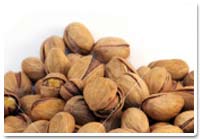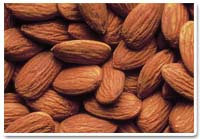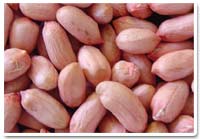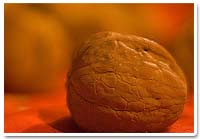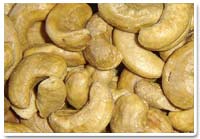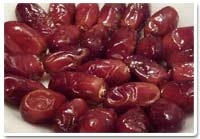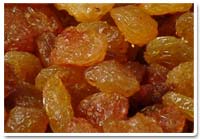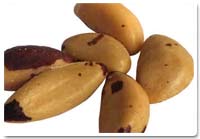Prunes
Introduction

In France, prunes soaked in Armagnac are a traditional accompaniment to foie gras. In Russian Jewish family, prunes appeared with regularity at festive times — at the holiday dinner table in the form of fruit compote, or enhancing the already popular brisket. Still candy bowls filled with individually wrapped chocolate-covered prunes is a delicacy reserved for special occasions.
Now more than ever, professional culinarians and armchair foodies appreciate the diverse applications of this flavorful and meaty fruit. Prunes have been found to be equally at home in a bittersweet chocolate and stout beer bundt cake as they are in a savory Moroccan rice dish with almonds, apricots and dried currants.
What are Prunes?
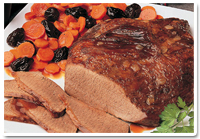
Although any plum can be made into a prune, those with the greatest flavor, sweetness and firmness are best suited for that use. Commercial dehydration has replaced sun-drying as the primary method of producing prunes. Though the best prunes are found in the fall, they’re available year-round and come in various sizes (small, medium, large, extra large and jumbo).
Not only do prunes taste great, but they are also very healthy- naturally naturally sweet and fat free, these delicious plums are high in potassium and fiber. Once called prunes, the industry thought switching over to dried plums was a much better approach to the contemporary consumers.
Availability and Storage
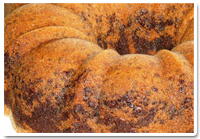
Prune Plums are a very versatile fruit available in retail stores in various forms including:
- Pitted Dried Plums
- Whole Dried Plums
- Prune Juice
- Fresh Plum Juice
- Fresh Prune Plums
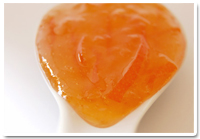
Dried Plums are “ready-to-eat” right from the package as a healthful snack or can be used as a versatile cooking or baking ingredient. They do not require refrigeration but once the package has been opened, close it and store it under cool, dry conditions. Sealing the unused dried plums in an airtight container and storing them in your refrigerator will help keep them moist and juicy.
A Brief History
Nutrient Profile
Cheddar Dried Plum Turnovers
Ingredients
Filling
- 2 cups (about 12 ounces) pitted dried plums
- 1/2 cup warm water
- 1 teaspoon ground nutmeg
- 2 teaspoons grated lemon peel
Pastry:
- 1 package (11 ounces) pie crust mix
- 1 cup shredded sharp Cheddar cheese
- 1/4 cup cold water
- egg, beaten
Directions
- Heat oven to 400°F
Filling
- In food processor or blender, process dried plums, warm water and nutmeg until almost smooth, pulsing on and off and scraping sides of container as needed. Stir in lemon peel; set aside.
Pastry
- In bowl combine pie crust mix and cheese. Add cold water, tossing until evenly moistened. Form dough into 12 equal balls. For each turnover, roll a ball of dough into a 5-inch circle. Place 2 tablespoons of Filling onto center of each circle. Lightly brush egg onto edge of circle. Fold in half and pinch edge to seal completely. Transfer to ungreased baking sheets; lightly brush top with additional egg and prick several times with fork. Bake 18 to 22 minutes or until light brown and crisp. Transfer to rack to cool. Serve warm or at room temperature.
Tip: After cooling, turnovers may be wrapped and frozen. Thaw before unwrapping. If desired, reheat in 350º oven for about 10 minutes.
Serving Tips
- Sprinkle plump, pitted dried plums atop oatmeal, on ready-to-eat cereal or into pancake batter as a complement to sliced bananas
- Smear It On: Chopped, pitted dried plums added to apple butter, orange marmalade, peanut butter or low-fat cream cheese give your favorite bagel smear a nutritious twist
- Pita Perfection: Looking for something new to pack into your pita? Halved, pitted dried plums add a fresh dimension to garden-variety turkey or chicken salad
- Side Dish Sensation: Dried plums can do savory, too. Sauté some with sliced onions and apples, and you’ve got a tasteful accompaniment to chicken or pork
- Better Batters: Add chopped, pitted dried plums to any muffin or quick bread batter for an instant flavor upgrade that boosts fiber, too
- Dazzling Desserts: Just soak pitted dried plums overnight in orange juice and you’ve created an elegant sauce to spoon over low-fat ice cream or frozen yogurt.






